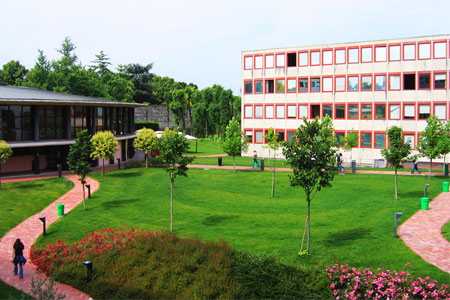Learning outcomes
On completion of this course, students:
– should know the geographical and demolinguistic status of Spanish and the essential aspects of the spread of this language in the world and in society;
– should know the main grammatical and lexicographical works of the Spanish language and their fundamental characteristics;
– should know the essential aspects of the phoneme / grapheme relationship, of the vocabulary and of the morphosyntactic struc-tures of Spanish and will be able to apply them in the analysis of texts.
Furthermore, B1 language level of competence in Spanish (ac-cording to the Common European Framework of Reference for Languages) is also required.
The course aims to offer an overview of the spread of the Spanish language and related issues and provide the basic tools for the analysis of the main functioning mechanisms of Spanish, according to a contrastive approach (Italian / Spanish).
The teaching methods include lectures on the following main topics:
1. Spanish language in history, in society and in linguistic works
a. Geography of the Spanish language and demolinguistics
b. Linguistic tools (dictionaries and grammars)
2. Constitutive elements of the Spanish language: from minimal units to morphosyntax
a. The graphic system
b. Aspects of the lexicon
c. Morphology and syntax features
The teaching materials used during the course are part of the exam program. They will be made available on the e-learning platform.
Bibliography:
- GAROSI, L., «Oraciones pasivas en italiano y español: dificultades traductivas y análisis lingüístico contrastivo», RAEL. Revista Electrónica de Lingüística Aplicada, n. 9, 2010, pp. 122-133.
- GARRIDO, J., «Lengua y globalización: inglés global y español pluricéntrico», Historia y Comunicación social, n. 15, 2010, pp. 63-95.
- LÓPEZ GARCÍA-MOLINS, Á., Un sueño plurilingüe para España, Valencia, Uno y cero Ediciones, 2017.
– MORENO FERNÁNDEZ, F. – OTERO ROTH, J., «Demografía de la lengua española», in Atlas de la lengua española en el mundo, Madrid, Fundación Telefónica, 2016, cap. 2, pp. 32-43.
- TORRES TORRES, A., «Del castellano de “un pequeño rincón” al español internacional», Normas. Revista de estudios lingüísticos hispánicos, n. 3, 2013, pp. 205-224.
- TROVATO, G., «El régimen preposicional en español e italiano: breve estudio contrastivo y traductológico», Ogigia, n. 13, 2013, pp. 19-34.
Assessment will consist of a written exam and it is s aimed at ascertaining the breadth and depth of the knowledge gained on the topics in the program, as well as the property of language, the terminological precision and the ability to connect the acquired knowledge in a systemic way.
The exam will focus on the program carried out during the lessons, on the didactic materials and on the bibliography of the course.
The written test consists of multiple choice questions, short answer and open answer. The exam questions will be written in Spanish, but the students will choose whether to answer in Spanish or Italian.
The program, the bibliography and the examination procedures are the same for all students, including non-attending students.
Erasmus students are invited to contact the teacher at the beginning of the courses for clarification.
LINGUISTIC COMPETENCE REQUIRED:
Level 2 (ALTE), B1 (Council of Europe).
Assessment of linguistic competence will be on the grounds of certificates issued by the CLA (the University Linguistic Centre) or by the Instituto Cervantes.
The final score will be obtained from the average of the written test and that of the linguistic competence. The results will be communicated via a notice published on the appropriate web page ("Notices").�
In relation to the situation deriving from the Coronavirus emergency, the examination procedure indicated above is changed for the 2020 summer and fall sessions, in accordance with the indications of the University, in an oral interview via ZOOM on the topics and the bibliography of the teaching.







